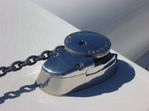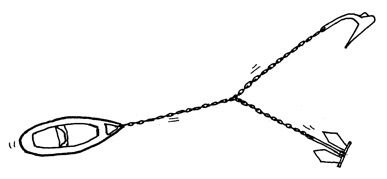Our advices
-
See advice
Waterproofing
The first criterion to consider in selecting binoculars is the waterproofing. On an open shell boat, a pneumatic or simply for use in all weathers, without hesitation one must take an immersion proof model (at least 2m.) Caution; waterproofing is not simply for moored boats. A pair of waterproof binoculars will hold up better over time. It is not uncommon for prisms to be affected over winter, simply by being left on boats.Magnification
The second point is the magnification. -
See advice
Compulsory documents
Navigation of less than 2 miles.
No obligatory documents.
Recommended
Paper chart of the sailing area
Navigation between 2 and 6 miles
-International regulations* for preventing collisions at sea (rules of priority between
vessels
-Paper or electronic charts
-Document on lighting system
Recommended
-Paper charts
-List of lights*
-Nautical instructions*
-Annual tides*
Logbook
High seas navigation
-International regulations* for preventing collisions at sea
-Paper or electronic charts
-Lighting system documents
-Annual tides*
-List of lights*
-Logbook
Recommended
-Paper charts
-Nautical instructions*
*These documents are published annually in works such as Bloc
Marine, Escales or the Breton maritime guide. These works may
replace them only on condition they have on board the work of the
year in course. -
See advice
How does it work?
A windlass is a sort of large winch which provides the force necessary to raise the anchor. It is equipped with a gypsy, a toothed wheel designed to hold the chain. Attention; this gypsy must be adapted to the diameter of the chain. For raising the cable, the windlass must be equipped with a warping end; this may also be used as an electrical winch to raise a person to the top of the mast, or for pulling a rope. To facilitate the passage of the chain, today sprockets are mixed (they welcome the chain and block the rope.)
-
See advice
The Regulations and the second anchor
The regulations impose an anchor only on boats with more than 4 people aboard.In practice, it is necessary that all boats have an anchor on board. Other than the fact it permits foreign moorings, the anchor also helps deal with emergencies in bad weather (damaged engine or sails.) Even if the second anchor is not mandated by law, it is important to have one on board. The hold of an anchor depends on the bed (rocks, seaweed, sand…)we therefore strongly advise a second anchor, different from the first. The two anchors are thus complementary.The different types of anchors
Standard p -
See advice
Mooring techniques
In case of the risk of bad weather, it is wise to use a second anchor, to avoid coming loose. When using two anchors they must be of the same technology to work in the same fashion.
Backing an anchor. This consists of using two anchors. If the two do not work on the bottom, the first, closest the boat reduces the load on the rear permitting it to find a hold.
Forking. This amounts to placing two anchors in a v in front of the boat. The manoeuvre is delicate because it is necessary to raise the first anchor before disposing of the second.

